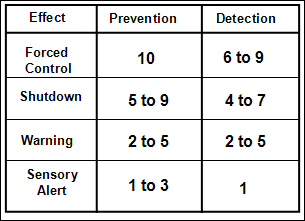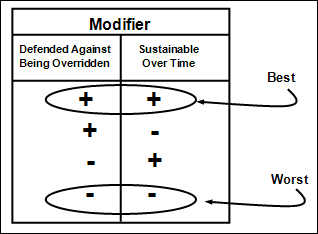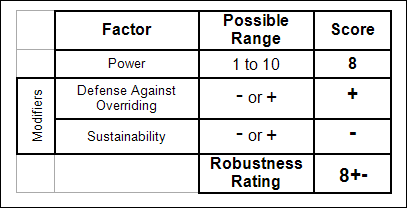Resource Centers
How Robust are Mistake-Proofing Solutions?
To assess how robust a solution is, look at the power of the mistake-proofing solution, whether it can be overridden, and if it is sustainable over time.
The first factor is to look at mistake-proofing power.
The power of the mistake-proofing solution is a measure of how well the solution fulfills the ultimate objective of mistake-proofing: to make it impossible to make mistakes.
There are three tips for improving the power of the solution.
The first tip focuses on the trigger of the solution.
- Using an automatic trigger (forced control or shutdown) instead an operator dependent or discretionary one (warning or sensory alert) improves the power.
The second power rating tip focuses on the type of outcome.
- The power of the solutions with prevention outcomes is significantly greater than those with detection outcomes.
- When possible, focus on prevention, not detection, outcomes.
The third power rating tip involves the type of effect selected.
- The power of the mistake-proofing solution becomes greater and greater as you move up the effects column.
- Forced control is usually better than a shutdown effect, shutdown is better than warning, and warning is better than sensory alert.
The second factor used to determine the robustness of a mistake-proofing solution is to assess how well it is defended against being overridden.
Solutions can be overridden if their trigger can be ignored, if a device can be disabled, or by a malicious act.
The third factor used to determine the robustness a mistake-proofing solution is to assess whether the solution is sustainable over time.
There are three questions to consider for assessing the sustainability of the solution.
Did the interim solution become “permanent?”
- Many organizations fall into the trap of allowing an interim solution to become permanent. However, interim solutions are like band-aids. They are short-term fixes not intended to be robust.
- To keep interim measures from becoming permanent solutions, identify the obstacles for developing or implementing permanent solutions, develop a time-based plan, and follow through.
Can practices regress back to the “old ways?”
- Fight off the urge to regress. To help do this, sell the benefits of the “new” way and audit performance for compliance.
Are there service life issues?
- Make sure the right materials are selected.
- If shelf life is a concern, use first-in, first-out inventory control.
- Check frequently at first to make sure the solution is working effectively and as planned. Then, use data to set the correct PM (preventive maintenance) frequency.
The solution can be assigned a relative power rating from 1 to 10.

The “1 to 10” power rating can be modified by two additional factors.

- One modifier is used to judge how well the solution is defended against being overridden.
- The second modifier is used to determine if the solution is sustainable over time.
A sample Robustness Rating with Modifiers is show on the following table:



